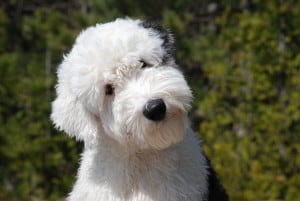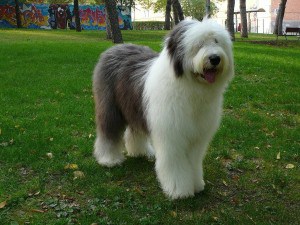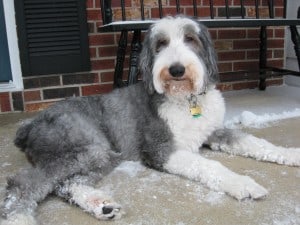
The Old English Sheepdog requires extensive training and the devotion of its owner. They make good house pets, provided they are given enough exercise. The Old English Sheepdog is quite good-natured, but can become destructive if not properly trained. It is essential that the Old English Sheepdog begin training at a young age, as its large size makes the unmanageability of an untrained animal quite difficult to bear.

A rather large breed, the Old English Sheepdog can reach 25 inches in height and weigh up to 80 pounds. They have a long, thick and shaggy outer coat with a thick, waterproof undercoat. Old English Sheepdog’s coats are usually gray, blue, or blue merle, with or without white markings. The coat is amazingly profuse and requires quite a bit of care. They have a sturdy body and a shuffling walk that resembles that of a bear.

By the mid 19th century, the rate of taxation had been fixed at seven shilling and sixpence, but sheepdogs were exempt provided they had no tails. Because so many people docked the tails of their sheepdogs to avoid the tax, the breed gained the nickname “Bobtail.” Old English Sheepdogs are no longer used to herd or drive livestock, but they remain popular both as pets and in the show ring. The Old English Sheepdog was first shown in 1873 at the Birmingham Show. The first breed club was founded in 1888.
Old English Sheepdogs should be given lots of exercise daily. They should be kept out of very hot or very wet weather. The Old English Sheepdog’s coat requires a lot of care, including brushing and combing daily to avoid matting.Some common health problems associated with the Old English Sheepdog include hip dysplasia, progressive retinal atrophy, juvenile cataracts, cervical vertebral instability, deafness and bloat.
